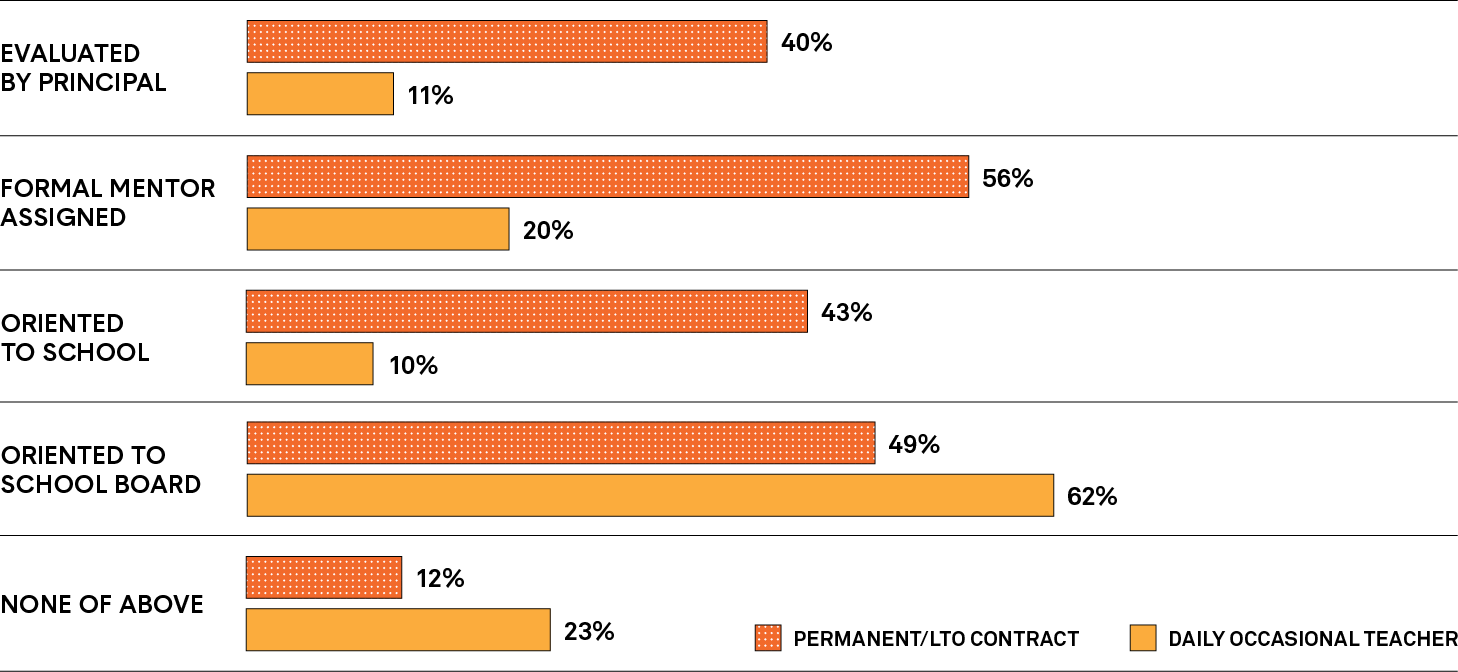Transition to Teaching
Unemployment Rates for Early-Career Teachers
Unemployment Rates for Early-Career Teachers
Early-Career Teachers with Permanent Contracts
Teacher Shortages Mean More Jobs for New Graduates
The College’s latest Transition to Teaching survey found unemployment for early-career teachers continues to recede. With an insufficient number of future Ontario teachers on track to start their teaching careers, this shortage will challenge school boards for the next several years.
Recent education graduates in Ontario reported less unemployment in the 2019–20 school year than in years past. The latest survey found first-year Ontario graduate unemployment at six per cent, with an average rate for teachers in years two through five between two and three per cent. These reports are much lower than the double-digit unemployment rates of recent years.
Despite the positive labour market for Ontario's early-career teachers in 2019–20, the journey was not easy for those trying to progress from part-time to full-time teaching jobs.
School closures in March 2020 ended all further teaching assignments for many daily occasional roster teachers and cut into weekly teaching days for others. Many first-year teachers say they did not teach as much as they wanted to during the school year. This underemployment rate jumped to 34 per cent in 2020 from just 14 per cent the previous year. Reports of job interview and appointment delays after schools closed added to the COVID-19 fallout that hit some newly licensed Ontario teachers.
Meanwhile, collective agreements with the province's teacher federations resolved future uncertainties with respect to average class size funding for Ontario district school boards. Proposals to increase student/teacher class sizes in secondary schools from 22/1 to as high as 28/1 are no longer on the table. Nonetheless, averages did rise to 23/1 in 2019–20 from 22/1 the previous year, restricting job opportunities for secondary panel teachers.
The combined effects of school closures, which delayed some teacher hiring, and secondary class size increases can be seen in the differences in the unemployment rate across certification divisions among first-year teachers.
Read the full 2020 Transition to Teaching survey, here.
Unemployment Rates for Early-Career Teachers
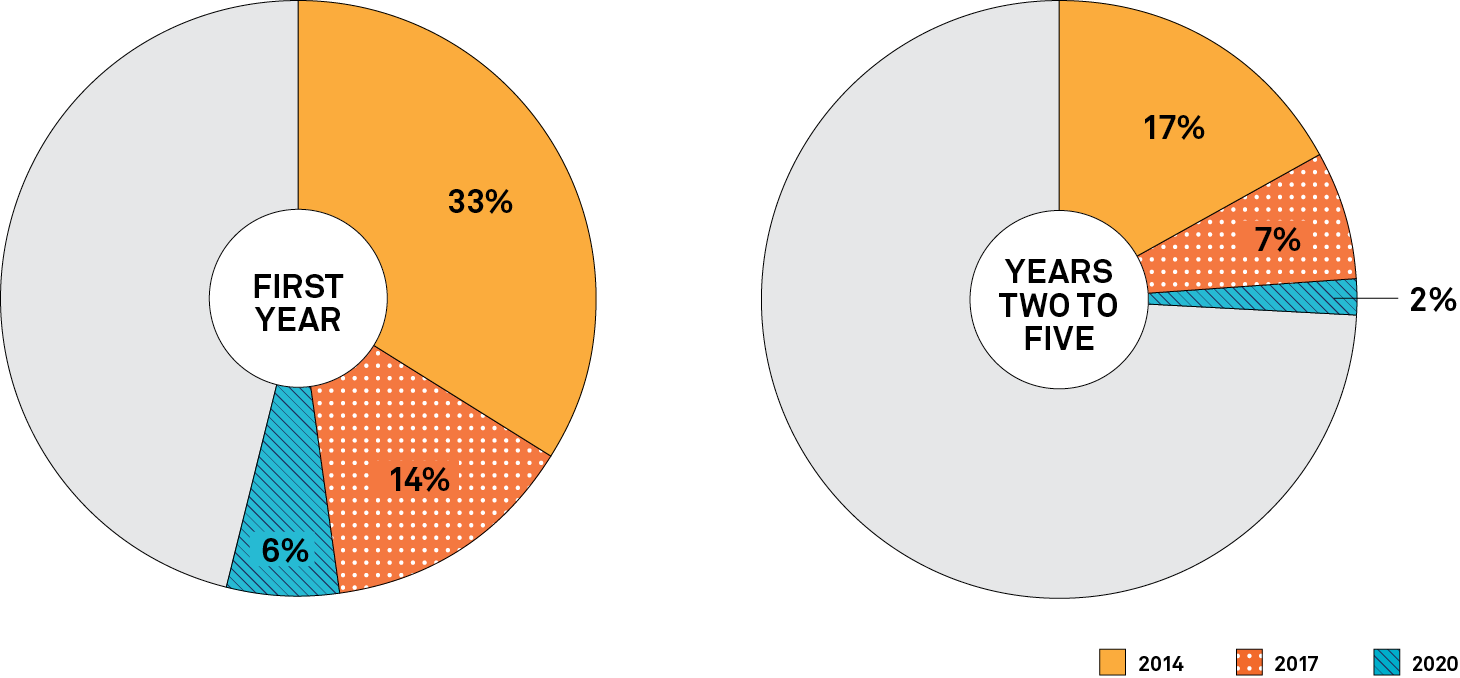
Annual New and Annual Retiring Teachers
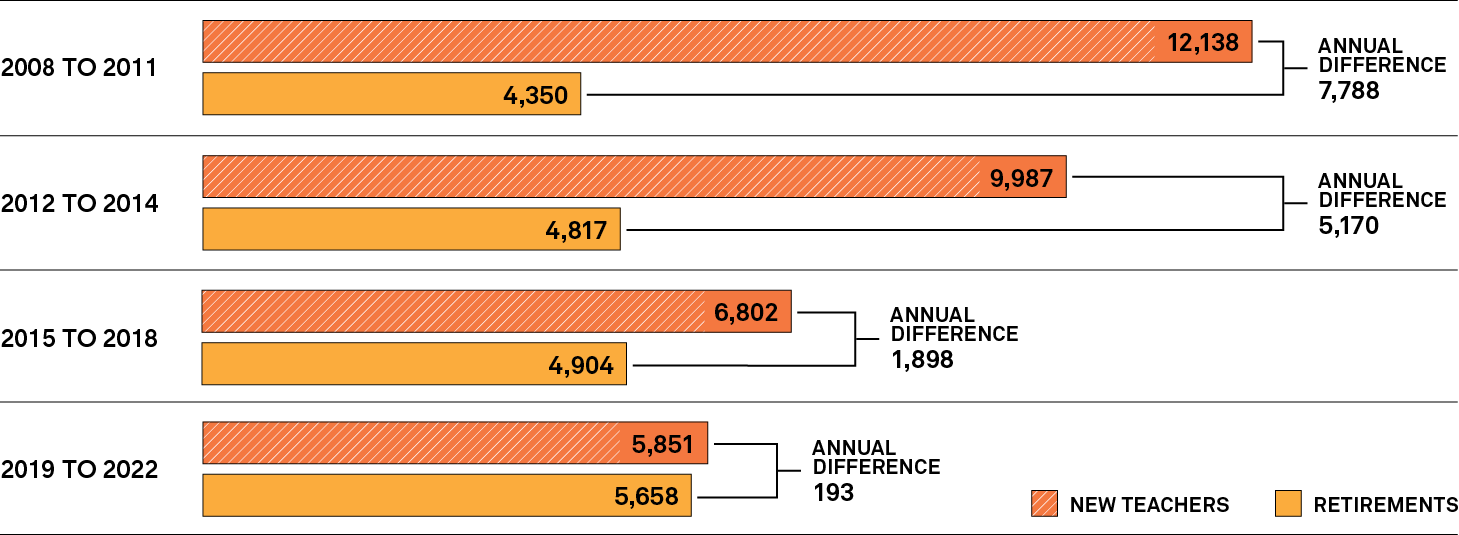
Early-Career Teachers with Permanent Contracts

Unemployment Rate for First-Year Teachers

Early-Career Daily Roster Teachers Affected by COVID-19 School Closures in March 2020

Employers of First-Year Teacher Hires
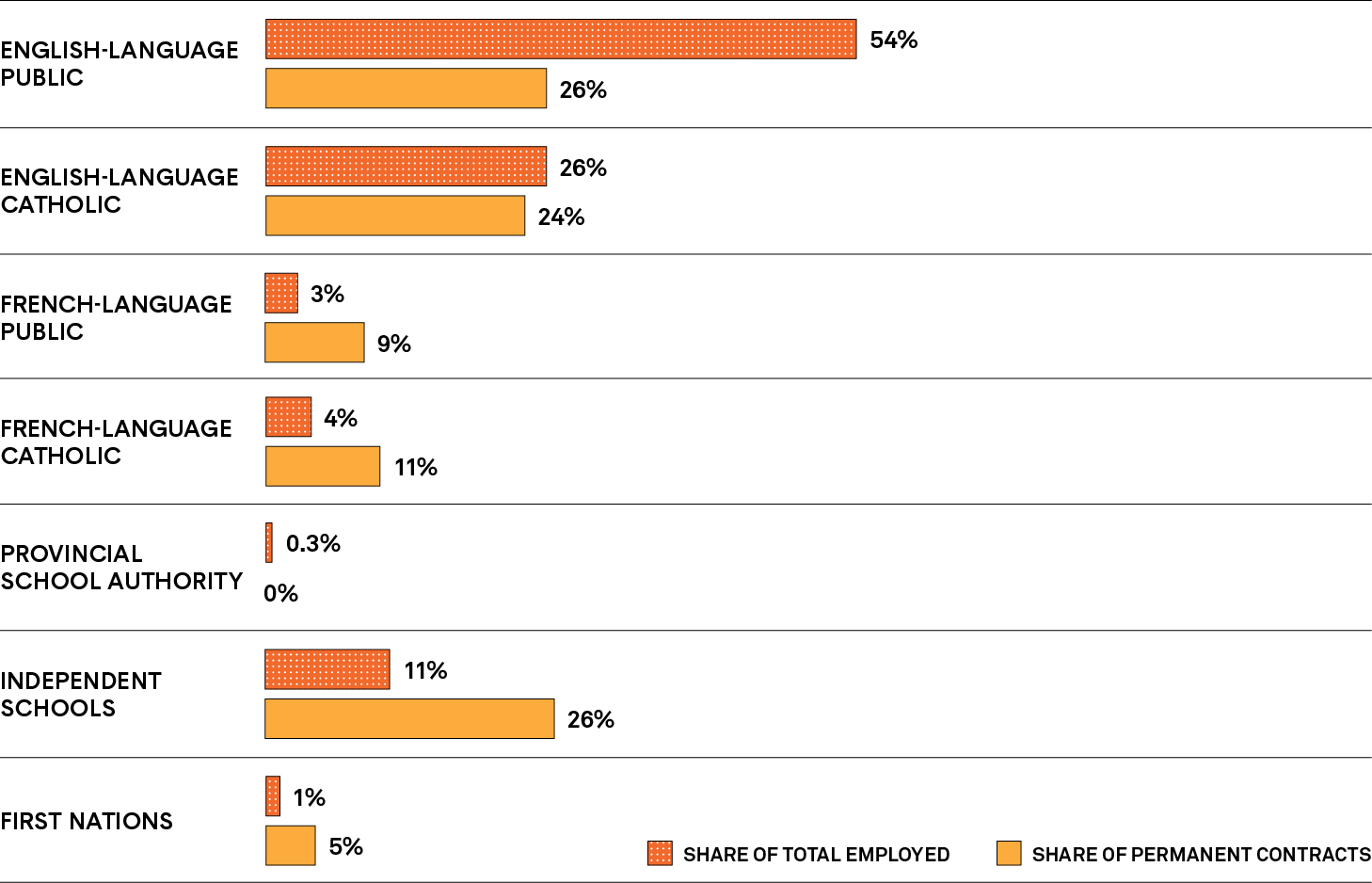
First-Year Teacher Contracts in 2020 by Language of Teacher Education
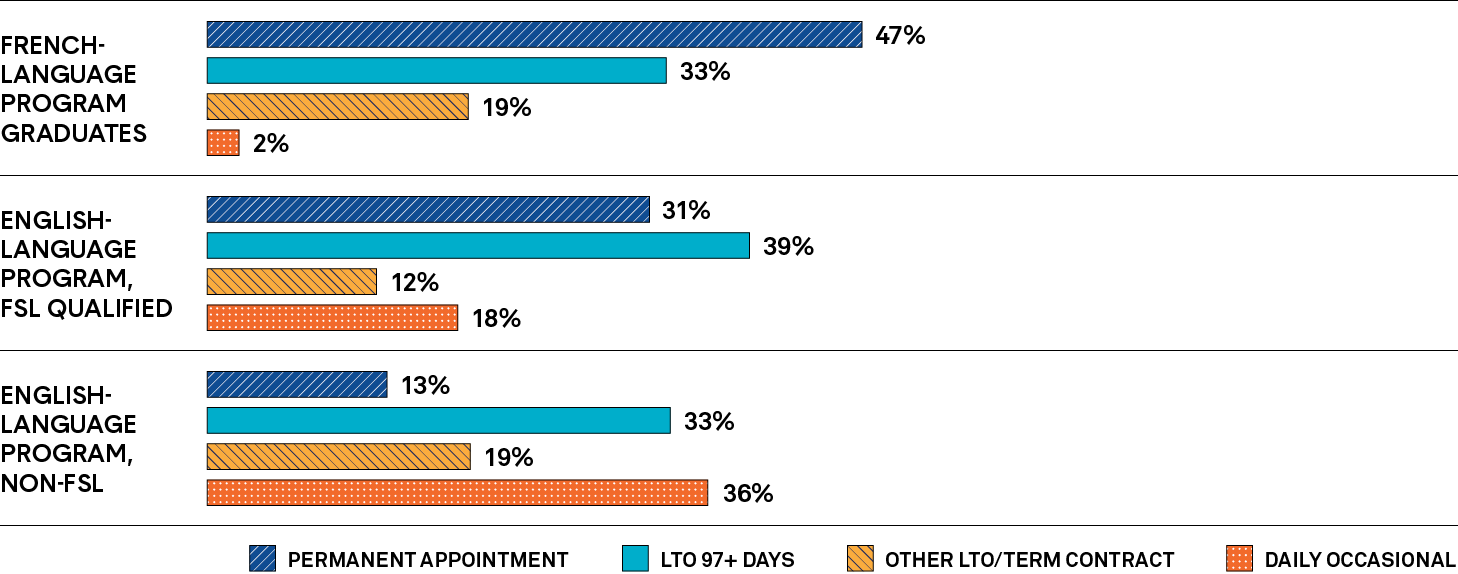
Daily Occasional Teacher In-School Support Gap
